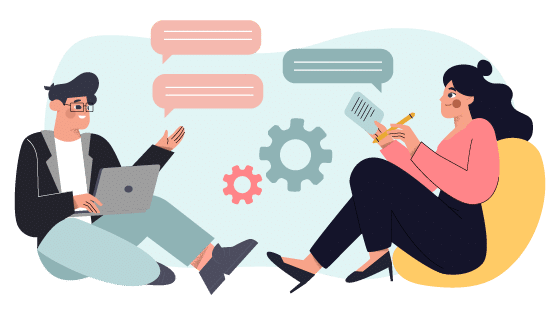For more information, check out our ebook here.
If multitasking had a cousin, it would be continuous partial attention (CPA): The ability to pay attention to more than one thing for an extended period of time. It may sound wonderful and complicated at the same time, but chances are you already use CPA to absorb information every day without even realizing you’re doing it.
What are some of the ways to tell if you have continuous partial attention?
- If you are checking your phone while participating in a meeting at the office, you have CPA.
- If you are listening to a podcast while writing and sending out sales emails, you are exhibiting CPA.
Basically, if you are constantly only giving activities or interactions just part of your attention, you have CPA. Virtually everyone exhibits CPA on a daily basis.
CPA can simultaneously be an asset or a hindrance when it comes to employee learning, and therefore, performance.
On one hand, it could be a vehicle to get more done by simply being able to focus on more things at one time. On the other hand, if you don’t know how to manage and work with CPA, you could be missing out on key learning opportunities and diminishing the ability to retain information. Connect with us here to utilize continuous partial attention to your advantage in your learning strategy. By learning how to use CPA and teaching employees how to use it to their advantage, you can make sure that it’s more friend than foe.
The Gamer Effect
It’s true that paying partial attention to something may not seem as effective as giving one thing your full and undivided attention, but CPA shouldn’t be maligned in the world of instructional design. Not only is some attention better than none at all, but promoting CPA might push information out to the same people that think they’re “too busy” to learn. When given the chance to quickly access information or listen to something in the background, it’s possible to get even the learning-averse to take notice and participate.
Consider playing a video game: What may seem a fairly inactive task actually promotes CPA to enhance learning and improve processing. Psychologists Shawn Green and Daphne Bavelier published a 2009 study which found that the CPA required by video games–causing the player to watch the screen, weigh incentives, listen to prompts, and use motor skills all simultaneously–actually improved user perception, reaction, and neurologically processing. According to the study, “By forcing players to simultaneously juggle a number of varied tasks (detect new enemies, track existing enemies and avoid getting hurt, among others), action-videogame playing pushes the limits of…visual attention.” Though gamers are paying attention to several things at once, it actually enhances the gameplay.
The way video gamers play is the way that CPA can be a friend and not a foe. When executed properly, creating opportunities for learning to effect several senses at once doesn’t overwhelm the user; it causes the learner to utilize more areas of the brain for better recall.
Continuous Partial Attention Loves Self-Guided Microlearning
The key to harnessing the power of CPA for good may be in the intelligent spacing of short bursts of information (aka Microlearning) and activities to create improve learner buy-in and reduce the learner burnout that can occur. When an LMS notifies learners of a quick, five-minute module, or learners are able to opt into a program that they can run in the background of other tasks, you stop fighting against the constant battle for user attention and start working with it.
Allow learners to self-guide and self-engage and they’ll feel less like they’re being forced into eLearning by rote. Instead, they enjoy prescribed eLearning in conjunction with the other stimuli that rules their day.
What may seem like an inherently negative phenomenon is no longer negative–it’s a way of life. With so many websites, notifications, and media pulling at your learners’ attention spans, is it any wonder that continuous partial attention is the new norm? You can either fight against CPA, or you can structure quick bursts of convenient, self-led eLearning so your users can get in, get out, and get on with their day.






